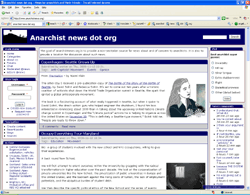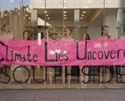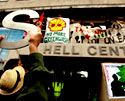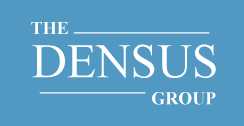
|
To be successful organizations must understand and interpret information about what has happened and is currently happening, anticipating what might take place next and allocate resources accordingly to take advantage of opportunities and to mitigate threats.
Situational awareness isn't just about being aware of 'now' – it's about what the current situation means and what can be extrapolated from past events and the present into the future, and using that to drive a decision or decisions to manage the threats and exploit the opportunities.
 At Densus driving situational awareness is achieved through the cycle of information, intelligence and operations. Equally applicable to decisions concerning business continuity, investing in start-ups, or a military operation to extract civilians from a foreign land which has suddenly turned violent, situational awareness complements the Densus approaches to risk and decision making to provide a robust, resilient platform for success achieved efficiently.
- Reporting The company is warned that a protest outside their premises is going to happen.
- Response
- Warn employees that access to the building may be difficult.
- Increase security.

- Reporting The company is warned that a protest outside their premises is going to happen.
- Analysis
- This protest group has a track record of association with direct action groups.
- There is an increasing correlation between protests by this group and the occupations of the target premises using techniques including:
- Lock ons.
- Sit down protests.
- Penetration into secure areas.
- In the event that direct action appears to have a low chance of success, the group is likely to protest at similar businesses or other company locations.
- The desire for media attention is high, increasingly the likelihood of media-friendly acts.
- Assessment That there is an increased threat of building(s) occupations with identified operational, reputation, financial and physical implications. This threat directly affects the targeted organization, but all industry organizations in the area should be at a higher level of preparedness.
- Tasks
- Deliver operational scenarios for threats at the personal and infrastructure levels for threat management.
- Having identified the effect the group is attempting to achieve, establish whether there are co-operative measures to be taken to enable both groups to achieve positive results.
- Identify viable activities to capitalize on the sentiments expressed by the group’s activities.
- Operational Tasks
- In co-ordination with the Risk Management procedures assess the likelihood of occupations and other actions, the scale of the various impacts and their responses, creating expected costs and benefits in terms of personnel, finance, operations, reputation and infrastructure to facilitate decision making.
- Develop plans and contingency plans, allocate resources.
- Task and rehearse security staff (including revisionary training on dealing with lock-on tactics and briefings on the likely tactics and responses), liaison with local law enforcement and emergency services, strategic communications plans for both internal and external communications, enhance protection of critical systems and locations (such as trading floors), etc.

- The Demonstration Report and Threat Analysis (DRTA) – A twice monthly round up of major protest events both in the US and across the world. The report contains details of protest events in the past two weeks including comment and recommendations for dealing with similar incidents where they are appropriate. It also contains details of forthcoming protests and any new protest tactics or threats identified in the reporting period.
- Protest Alerts – Alerts for protests that have been planned at short notice and not covered by the DRTA or that have had a significant change of plan since the last DRTA. These alerts are released as required.
- Special Event Reports – In depth reporting in advance of major protest events in the US issued in conjunction with the DRTA. As an example reporting on the G20 summit in Pittsburgh began three months before the summit and the reports were being used by the Pittsburgh Police, Pittsburgh City Council, Pennsylvania State Police and other supporting agencies and numerous businesses in the city.
The analysts in the Threat Center come from a rare mix of operational backgrounds. Not only do they all have experience of intelligence gathering, analysis and dissemination in an operational role, they are also experienced in crowd management operations, both on the ground and in providing actionable intelligence support.
This gives them the ability to ‘read between the lines’ in protestor statements, identify likely tactics and then turn that into actionable advice for the client.
We are currently providing these products to clients as diverse as;
- Police Departments across the country.
- United States Marine Corps.
- United States Coast Guard.
- United States Marshall Service.
- Federal Bureau of Investigation.
- American Bankers Association.
- A wide variety of energy and manufacturing companies.
|


